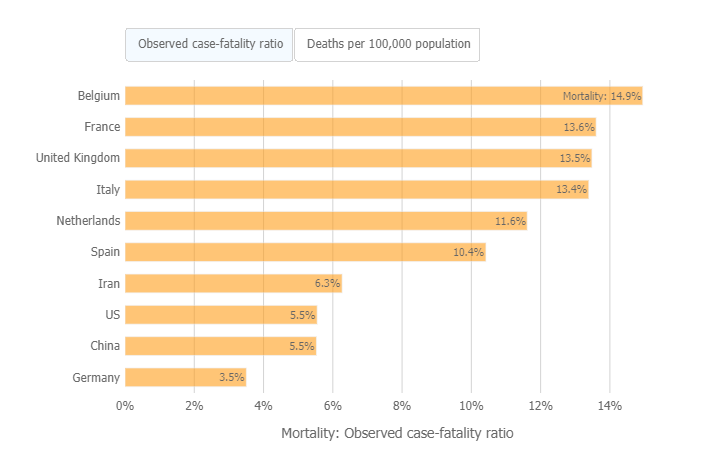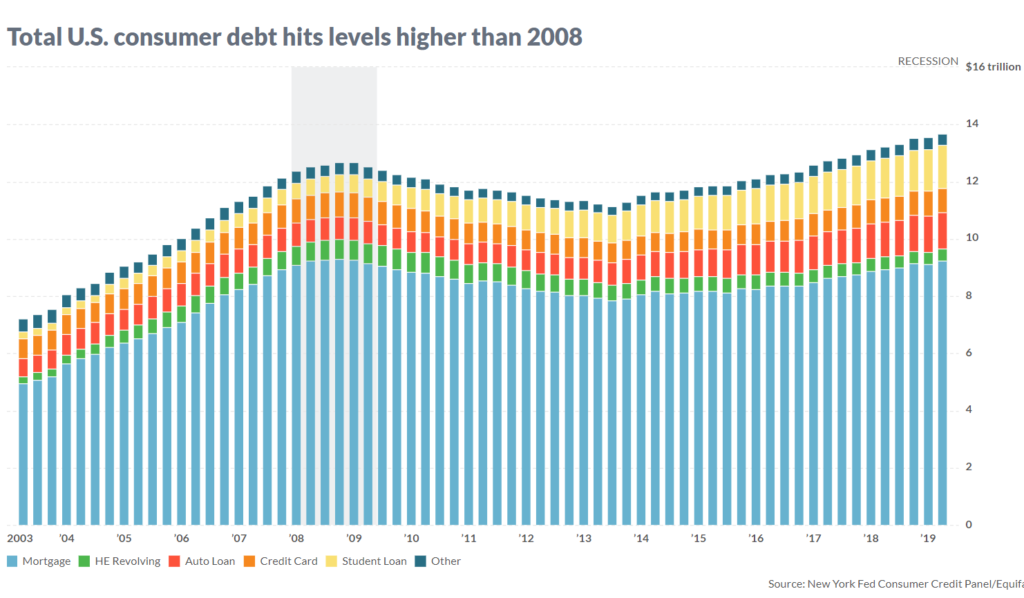
Bitcoin’s Sustainability…Yes or No? Is it possible? Does it make sense? Does it make sense to place so much time, capital, and resources into crypto currencies like Bitcoin (and others on Blockchain technology) that require extensive consumption of energy, that lack transactional performance and efficiency, are costly on both sides, and have security vulnerabilities? It appears to us, that these are some of the inherent risks with crypto currencies built with blockchain technology versus “hashgraph” technology. See these comparative charts of the top two blockchain crypto’s built on Blockchain technology versus Hedera’s Hashgraph technology and their crypto currency “HBAR” (CHART #1 and CHART #2).
Many proponents of Bitcoin and hundreds of other crypto currencies proclaim the benefits of these crypto’s, in that they provide a financial solution of decentralization and independence from the control of central banks and the current global financial system. Sounds like it would be a good thing, right? But is that even possible? Is it practical? And if it is, at what cost? Is it even possible to replace the current global financial system with hundreds of different crypto’s currently in the crypto world, each lacking the forementioned performance attributes and capacities (refer to the charts above) required to effectively and efficiently replace the global financial system?
Does it make sense to move from a centralized global financial system that is rapidly becoming evermore streamlined and centralized (as in the sanctions being used against Russia in the current Ukraine/Russia conflict), and move to a “decentralized” system built on what…a lagging technology such as blockchain that is slow, expensive, and incapable of handling hundreds of transactions let alone the billions of transactions on a daily basis? Perhaps we (GMS) are missing something??? How would this “new” system and all their connectivity systems be used on a practical daily basis…how would it be implemented, regulated, monitored, managed and secured? And by who? Consider this ARTICLE on Bloomberg News. Well…let’s explore a few of these points a little further:
PERSPECTIVES: Is Bitcoin Sustainable?
We believe digital money in place now is and will continue to be the progression of future financial transactions globally. But in what form? Is Bitcoin’s Sustainability and other Blockchain crypto’s for that matter, realistic in today’s digital payments system? We have all become accustomed to purchasing products and services in both physical and online stores by either entering a few keystrokes on the computer, tablet, or smartphone by either tapping or scanning our debit cards/credit cards/or smartphones without the need or use of cash or checks, right? We would also presume that nearly all current fiat currencies in the developed countries and in most under-developed countries are also available in digital form as well (no need to carry cash if that’s your choice). For many years the Central Banks digitally increase and decrease the money supply with book entries, and physically prints just enough cash to sustain our current global cash transactional needs. That said, there are several issues surrounding cryptos, and in particular Bitcoin or any other crypto currency based on blockchain technology that we need to address if we’re going to consider adopting them into our daily lives, and to put our trust and confidence in these platforms. We see five critical issues surrounding the viability of Bitcoin and other crypto’s utilizing Blockchain technology, if they can “reasonably” be expected to drive the future global transactions and financial system. Below are the key challenges that stand out to us:
– POINT #1: Transactional Processing Comparisons:
Simply compare the processing capabilities of Bitcoin and Ethereum (using blockchain technology) versus Hedera’s HBAR (using Hashgraph technology). Once again, please refer to these charts: CHART #1 and CHART #2. The evidence and conclusion is obvious! Bitcoin can effectively handle 3 transactions per second (with finality); Ethereum can process a whopping 12 transactions per second (with finality); and HBAR can handle 10,000 transactions per second with finality (and is fully scalable to handle much, much more). Are we missing something? Or is the world being deceived to place their money in ponzie scheme technology “assets” like Bitcoin and Ethereum? We just ask the simple question…”Why would anyone ever place their confidence in a flawed crypto, like Bitcoin or Ethereum which are both based on yesterday’s technology, blockchain technology?” So is Bitcoin’s Sustainability realistic? Let’s look further…
– POINT #2: Transactional – Fee Comparisons:
Simply compare the transactional costs of Bitcoin and Ethereum versus Hedera’s Hashgraph HBAR crypto. Once again, please refer to these charts: CHART #1 and CHART #2. As you can see, Bitcoin transactional cost come in at $22.57; Ethereum transactional cost comes in at $19.55; and HBAR transactional cost comes in at $.0001. The evidence and conclusion is obvious. Let’s move on to the next point…
– POINT #3: Transactional – Energy Cost Comparisons:
The costs of mining and maintaining Bitcoin and other cryptos using blockchain are substantial, and just don’t make sense to us, ESPECIALLY when producing a more costly yet less efficient, and less secure crypto. Please listen to this VIDEO on Bitcoin mining and energy sourcing. Does this make sense? The energy costs just to mine/produce Bitcoin alone are now becoming evident around the world. Mining companies around the world are actively seeking higher efficient / low carbon footprint energy sources to mine Bitcoin. That’s a respectful objective…to reduce the cost of product input and its carbon footprint on the environment. But how much can Bitcoin, Ethereum and other cryptos built on Blockchain technology realistically reduce their costs when compared to the energy costs of Hedera’s HBAR using Hashgraph technology?
Well, let’s look at the charts once again for a comparison (CHART #1 and CHART #2). Bitcoin energy consumption costs come in at 885 kwh; Ethereum energy consumption costs come in at 102 kwh; and HBAR energy consumption costs come in at .00017 kwh. Need we say more? Are you arriving at the same conclusions we have come to? But there’s more, much more if you’re willing to research for yourselves and not take the words of others at face value. The evidence and conclusion is obvious to us. So again, we ask is Bitcoin’s Sustainability realistic? Next point…
– POINT #4: The IMF/IBS/World Bank Factor:
If you believe there will be an independent financial system free of oversight from the world’s central banking system, then we believe this is a very, very flawed and naïve perspective. Do you really believe the central banking powers of this world will allow a replacement financial system that cuts them out of the equation? Who will regulate the cryptos and the exchanges they’re traded on? Who will oversee regulatory issues on an global level? Which crypto will become the “world crypto currency” to be used for daily transactions from over one thousand cryptos currently in the world today? Bitcoin…Ethereum? Really? Based on the evidence just presented? Do you honestly believe Bitcoin or Ethereum have the technological capabilities and capacities to handle this on a global basis? If so, then I urge you to please refer once again to the two charts listed above. In our opinion, the central banks have been working on their own crypto to be the replacement digital currency.
We also urge you to listen to this brief STATEMENT made by the General Manager from the BIS (the Bank of International Settlement). (Please note: this video was shared by Ms. Catherine Austin Fitts through her newsletter, who in our opinion is one of the most intelligent, thoughtful, strategic, and sincere person we have had the privilege of listening to over the past decade. You can subscribe to her newsletter at The Solari Report or search for her interviews on YouTube or other platforms). Ok…getting back on point…We also believe the central banking powers have utilized the private sector to create an atmosphere of crypto competition to design and engineer a best-in-class crypto technology. The most capable technology that emerges from this hi-tech competitive war, will legitimately have the capacity to replace existing fiat currencies globally. Once the global banking authorities have tested these technologies and their capabilities on all fronts and make their decision, then they will introduce this new global crypto currency. We are pretty confident it won’t be Bitcoin or Ethereum or any other crypto currency built on Blockchain technology. Rather we believe the future crypto currency (most likely the CBDC) will be built on the Hashgraph technology platform. We’ll see…we could be wrong, but Hashgraph technology appears to be the only technology available in the marketplace capable of handling the global financial transactional needs. So again, we ask is Bitcoin’s Sustainability realistic?
– POINT #5: A Possible Solution:
Hashgraph technology is engineered by a company called Hedera, and their crypto is called HBAR. Ever heard of it? Most likely not. We encourage you to take a deeper dive into the capabilities behind Hashgraph technology and their founders (Leemon Baird and Mance Harmon of Swirlds and Hedera…the creators and minds behind Hashgraph technology. Based on our research over the years, Hashgraph appears to be the only technology platform solution capable of meeting all the requisite standards to become “the” technology of choice used in the future global financial system. So, how does Hashgraph technology differ from other cryptocurrencies built on Blockchain technology? The following two links are with the co-founder of Hashgraph (Mance Harmon) who will better explain the differences between Blockchain and Hashgraph technologies than I can do within this post: Link #1 and Link #2.
Question…So why have most people not heard of Hashgraph technology and their crypto called HBAR? In our opinion, while others have hit social media platforms with a frenzy to promote their “crypto du jour” for get rich quick schemes via short-term trading, Hedera’s strategy on the other hand is built as a serious mathematical, engineering, and technology solution to a very complex challenge. In contrast to other crypto’s including Bitcoin and Ethereum, Hedera has engineered their technology platform from the bottom up. It is designed to be a viable technology solution to solve the future digital global financial transactional needs and challenges AND…incorporates a Global Governing Council to oversee its future utilization. Hashgraph is specifically designed on best in class, mathematics and software engineering that solves the deficiencies that current platforms cannot (like blockchain), and is capable of meeting the ever growing and complex needs of individuals, businesses, and governments globally. Once again, we urge you to visit their websites (Hedera and Swirlds), and you can also refer to our earlier posts on Bitcoin versus Hashgraph by clicking HERE.
CONCLUSION: Is Bitcoin Sustainable?
In conclusion, we believe the frantic Bitcoin price rise is largely based on a presumed “value” by a segment of the public. So the question is; is Bitcoin’s value one of the best Ponzi schemes of the 21st century or is it legitimately a store of “value”? We don’t know the final answer to that. All we can say, is when a crypto…a “technology asset” such as Bitcoin or Ethereum, are based on an inferior technology platform like Blockchain, that it is costly to produce, that it is costly for consumers to transact, and that it is “produced” from a highly inefficient environmental perspective, and that it has security vulnerabilities, why would anyone place any real “value” on it other than for pure speculative purposes? That’s the question we should all ask ourselves.
Sure, if we were speculative traders, I would have loved the opportunity to buy Bitcoin years ago, and sell at today’s price…who wouldn’t? But that’s not the point. The point we’re trying to understand and to share with our readers is…Is there real intrinsic value and sustainability in Bitcoin and these other crypto’s built on Blockchain technology or not? Is it really a store of value? If so, what is their value based on? Does it produce anything…anything of real benefit? Is there real value in Bitcoin or these other crypto’s because other financial experts or celebrities are getting on the bandwagon of something they really don’t understand? Have they been sold a bag of social media hype and promotion that is costly and inefficient? Or…Could they be right and they understand something we don’t? Could we perhaps be missing something and be wrong? Perhaps…but we don’t think so given the data available. We’re always willing to consider new, relevant, viable data that could change our perspectives. However, after nearly four years of research, we keep coming to the same conclusions over and over again because there is no other compelling evidence (not opinions) that we’ve been presented with to change our perspectives. We keep asking ourselves the same questions about Bitcoin and nearly all the other crypto’s…what is their intrinsic value?
In closing, let me ask you this, if Bitcoin or any other crypto (except for HBAR) were valued at$1 or $500 or $500,000 (instead of $40,000 at the time of this post), how would you understand or describe their intrinsic value? Would their utility value be any different? Based on what? We understand the total amount of Bitcoin is fixed and cannot be increased…so what? Does that mean if you have only 21 million rocks of a particular mineral makeup, that therefore those rocks have a store of value? Perhaps it does to those who may collect rocks…they may value those rocks. But what about those people who don’t place any value on those rocks because there is no utility value of the rocks themselves nor in the minerals that can be extracted from those rocks? That’s where our understanding of Bitcoin and nearly all the other crypto currencies we have researched, with the exception of Hedera’s HBAR (because it can solve the issues centered on digitizing financial transactions utilizing a crypto currency.
We believe Bitcoin and many other crypto’s are priced in the market today by supply and demand based on short-term trading hype, mainstream media and social media hype promoting Ponzi-like speculative assets that have little or no realistic or practical utility or intrinsic value. We understand…people have become rich, filthy rich trading these cryptos, no doubt (kudo’s to them)! There are some very rich people that have become tremendously wealthy trading these. Our concern or issue isn’t centered on those people, rather to better understand “why” would anyone place any value on a technology tool or product that has not intrinsic or utility value. Our concern also being expressed is for the everyday person who may get swayed into pouring their life savings or a significant portion of their retirement assets into these so-called digital “assets” (that in our understanding have no real value), and they lose everything they have or a significant portion of their nest egg.
We also want to say, we do believe there are some genuine crypto engineers and software developers who are honestly striving to engineer better financial solutions to our current fiat currency system. We applaud them for that! But at the end of the day, they must provide value…not just short-term hyped trading value. But in our opinion, the crypto currencies available in today’s market place that are built on Blockchain technology have three significant challenges facing them:
- Most Cryptos are Utilizing an Inferior Technology – that are incapable of handling the vast amount of financial transactions on a global basis efficiently, that is cost effective to produce and transact, and are highly secure.
- The Influence of the IMF/BIS World Bank/Central Banks – If you believe the global financial powers of the world (the IMF/BSI/World Bank and Central Banks) will relinquish control of the future financial system to a decentralized platform of crypto currencies controlled by individuals…then we respectfully disagree. Again, take a listen to what the General Manager of the BIS says about crypto currencies HERE.
- Most Importantly…The Word of GOD – In the Bible, God tells us in Revelation 13:11-18 that there will come a time in the near future (based on bible prophecy timelines), when those who do not have the mark of the beast cannot buy or sell… If you’re a believer and follow the Word of God, think this through for just a moment… This means that a future global financial system MUST be in place in order to enforce this, right? This financial system therefore would likely be built on a “centralized” platform so that buying or selling can be enforced…not on a “decentralized” platform, right? This centralized platform must also be capable of executing transactions or cutting off an individual’s access to their financial assets on a global basis in real time, right? The global financial system therefore, cannot be built on hundreds of decentralized cryptos or on a crypto that can only process a handful of transactions per second. The global financial system therefore, would likely need to be be built on a centralized system that must be capable of handling the billions of individual, business and government financial transactions globally on a daily basis. Would you agree?
We also believe the evidence demonstrates that Blockchain technology cannot be the technology utilized because the future currency/crypto currency that would likely be used, must therefore be capable of handling all the banking and financial transactions on a global basis. Why? Because it can’t handle the transactional volume, it isn’t cost-effective on both sides, it isn’t energy efficient, and it isn’t secure enough to meet the global financial system’s needs. So what other technology is currently available to meet the global needs on a daily basis? Based on our research, we believe the technology most likely to be utilized would be Hashgraph technology. So…we come back to the same question from the beginning; Is Bitcoin sustainable…Yes or No? Can it go higher in price? Sure it can as long as there are people who believe it has value! But ask yourselves…value based on what? Speculative demand or real intrinsic or utility value? Only time will tell, but in the meantime we just wanted to cautiously present data and perspectives that we have found to be compelling. After viewing the comparative data presented and the challenges for Bitcoin and Blockchain based crypto’s, we ask you this question…do you believe Bitcoin’s Sustainability is realistic?
The conclusions we have reached (as of today’s posting date), leads us to our forestated conclusions. That said, we are always open to new insights, perspectives and ideas based on sound, proven, verified data. Then, once presented with this evidence, we are certainly willing to update or modify our positions when presented with undisputable evidence…not by social media hype, financial pundit hype or Wall Street hype. Until next time, and as we always state in our posts, do your own homework, then make your own informed conclusions and decisions…
GMS BUSINESS CONSULTING, INC. – Provides lawyers/law firms, for-profit & non-profit organizations, and business professionals with Accounting Services, Business Development Services (M.A.P.), Business Optimization Services, and Digital Marketing Services. We help business professionals strategically manage and tactically grow their businesses more effectively and efficiently. We do NOT provide investment advice. Contact Us if you are interested in learning more about our services, and in particular about M.A.P. (our 3-phase business development & management solution), designed to help you strategically manage and tactically grow your business. We would welcome the opportunity to speak with you.
info@gmsbusinessconsulting.com
707-218-3135




















